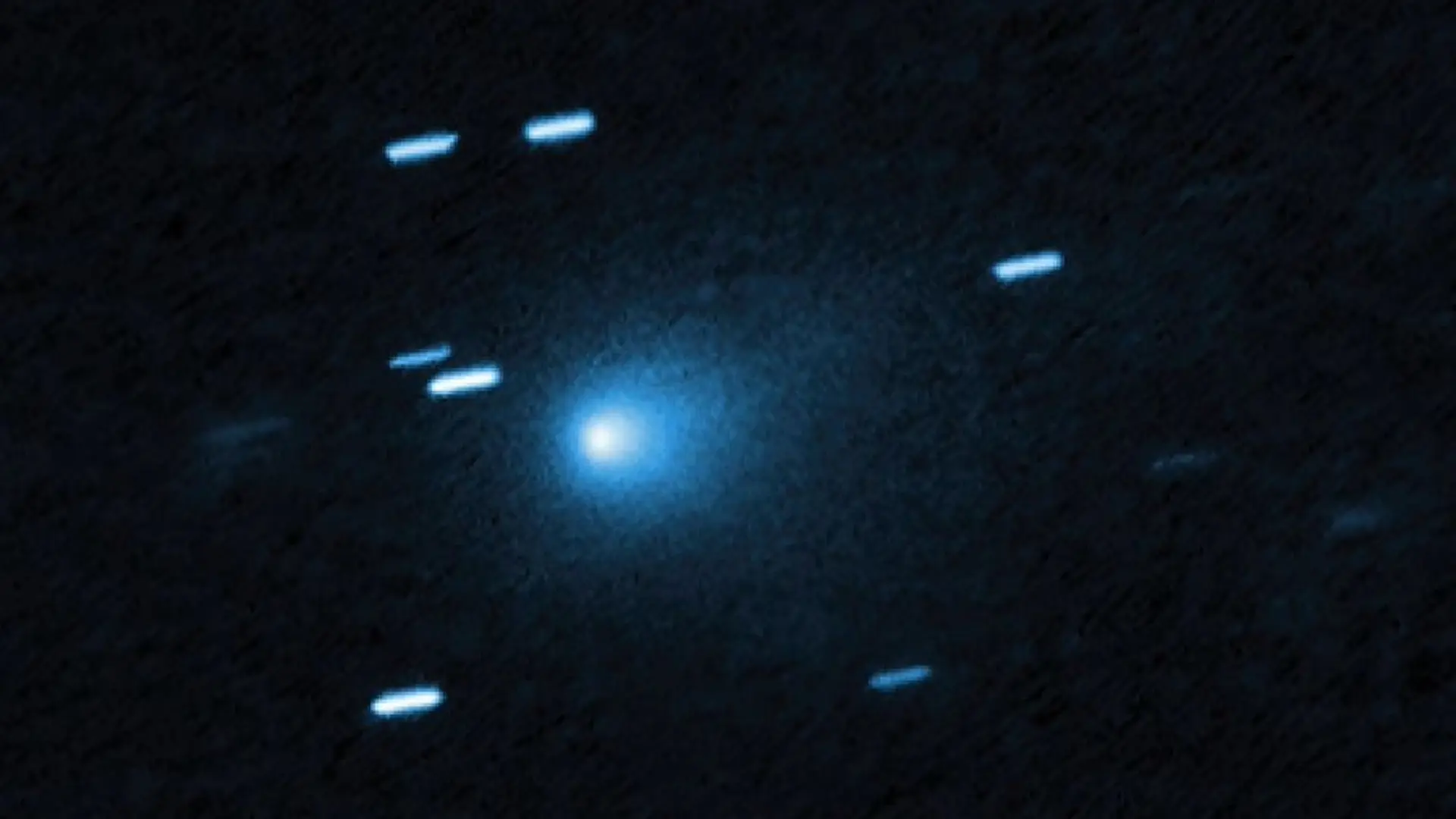New data indicate a measurable non-gravitational acceleration in 3I/ATLAS
-
 Interstellar comet 3I/ATLAS (Image via NASA)
Interstellar comet 3I/ATLAS (Image via NASA)On October 30, 2025, Harvard physicist Avi Loeb published an article on Medium, shedding light on a recent report filed by Davide Farnoccia, a navigation engineer at NASA’s Jet Propulsion Laboratory in Pasadena.
According to the study, interstellar object 3I/ATLAS showcased its first sign of a non-gravitational acceleration at perihelion, or the point of closest approach to the Sun.
The non-gravitational acceleration was detected at a perihelion distance of 1.36 times the Earth-Sun separation, equivalent to 203 million kilometers.
The deviation from the gravitational motion was characterized by two in-plane acceleration components.
“A radial acceleration away from the Sun of 135 kilometers (=9x10^{-7}au) per day squared,” the report said.
And the second:
“A transverse acceleration relative to the Sun’s direction of 60 kilometers (=4x10^{-7}au) per day squared.”
The numbers indicated a measurable non-gravitational acceleration, adding another layer of information to ongoing studies about the interstellar object and speculations surrounding it.
Based on the latest findings, Loeb suggested two possible reasons behind the non-gravitational acceleration. It could either be caused by the rocket effect of ejected gas or there could be a “technological signature of an internal engine.”
What could be causing the non-gravitational acceleration in 3I/ATLAS? Possible hypotheses explored
According to Loeb’s article, 3I/ATLAS could be propelled by the rocket effect of ejected gas. If that is the case, then, based on the law of conservation of momentum, the interstellar object will lose half its mass over a period of time.
“For a thermal ejection speed of a few hundred meters per second, the evaporation half-life of 3I/ATLAS is 6 months,” the article read.
As a result, during the month it takes the interstellar object to pass perihelion, 3I/ATLAS will likely lose roughly a tenth of its total mass.
The mass loss will be significant and should be detectable as a “large plume of gas surrounding 3I/ATLAS” during the months of November and December 2025.
ESA’s Juie spacecraft will be the first to observe 3I/ATLAS’s mass loss during the first week of November 2025.
The following month, the interstellar object is expected to come closest to Earth at a distance of 269 million km. At that moment, it will be detected by the ground-based telescopes and the Hubble and Webb telescopes.
Based on the readings obtained during that month, the astronomers’ community should get some clarity on whether 3I/ATLAS lost a tenth of its mass “through sublimation of volatile ices when it was heated by intense sunlight at perihelion.”
If the object loses mass through evaporation, it may provide answers to the unusual brightening, as reported based on observations from the STEREO, SOHO, and GOES-19 instruments.
However, the non-gravitational acceleration can also be the “technological signature of an internal engine.”
If that happens to be the case, it will provide answers to the unusual instance or anomaly of 3I/ATLAS becoming bluer than the Sun, which is “very surprising” for a natural comet.
“It could potentially be explained by a hot engine or a source of artificial light. However, it might instead be a signature of ionized carbon monoxide for a natural comet,” Loeb noted.
Loeb concluded the article by referencing the advice he shared with young theorists during a luncheon at Harvard’s Institute for Theory and Computation.
“It is a bad professional practice for theoretical astrophysicists to conclude that the data must be wrong just because they do not have a theoretical explanation for it,” he said.
That said, he hoped experts applied the same lesson while studying the anomalies of 3I/ATLAS.
Stay tuned for more updates.
TOPICS: 3I/ATLAS, Avi Loeb, 3I/Atlas nearing sun, NASA
- YouTube removes AI-generated 3I/ATLAS videos impersonating Harvard Professor Avi Loeb
- New analysis presents unusual features documented in the 3I/ATLAS trajectory and activity
- Periodic light variability in interstellar object 3I/ATLAS linked to jet activity
- What we know so far about 3I/ATLAS: Everything understood to date